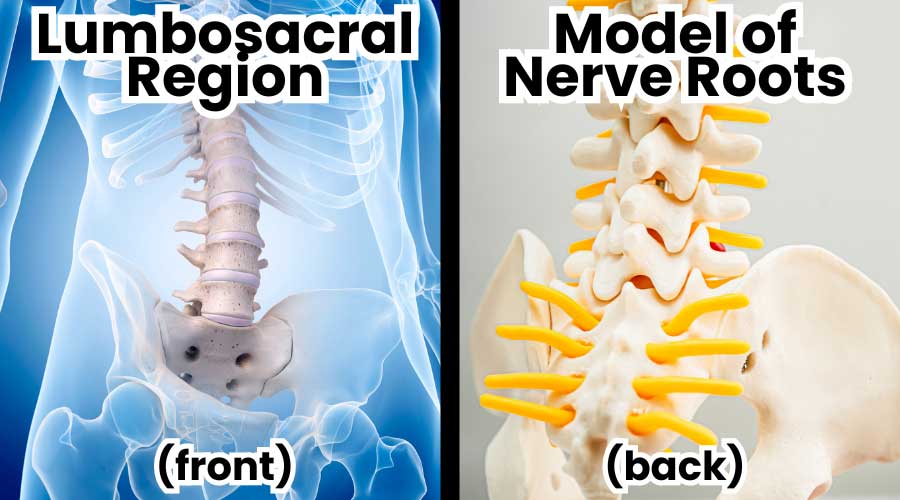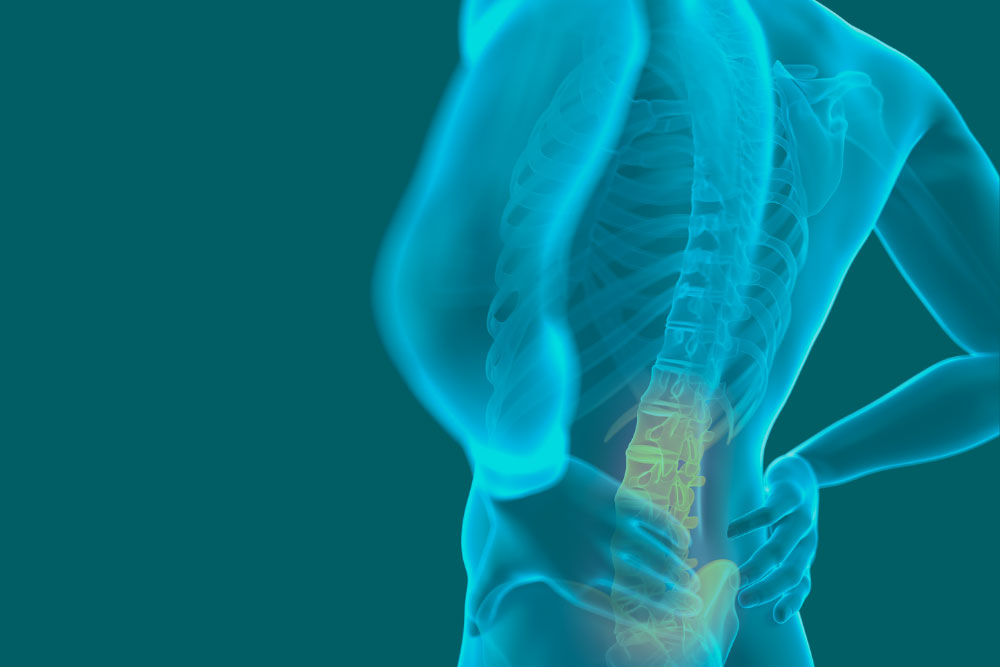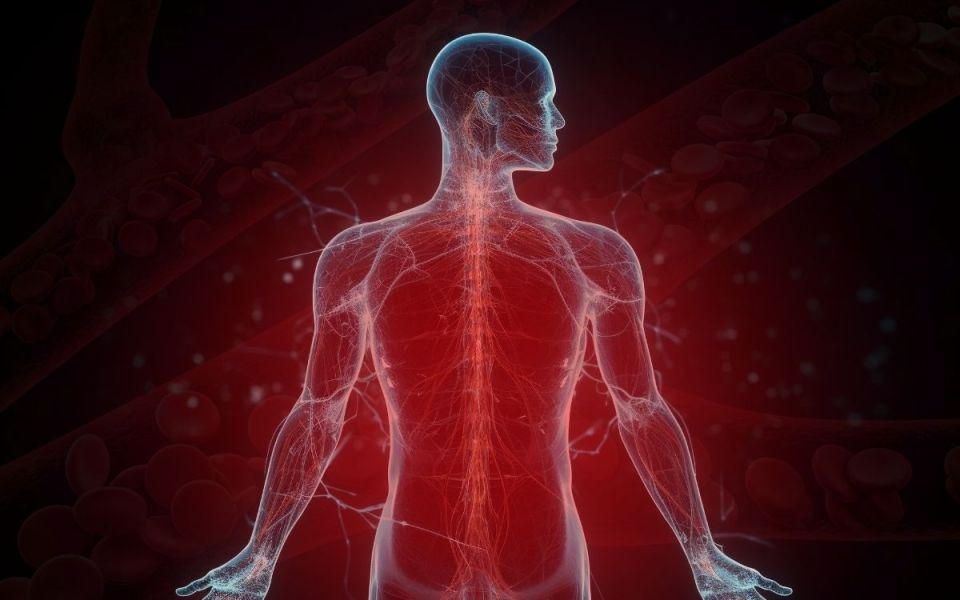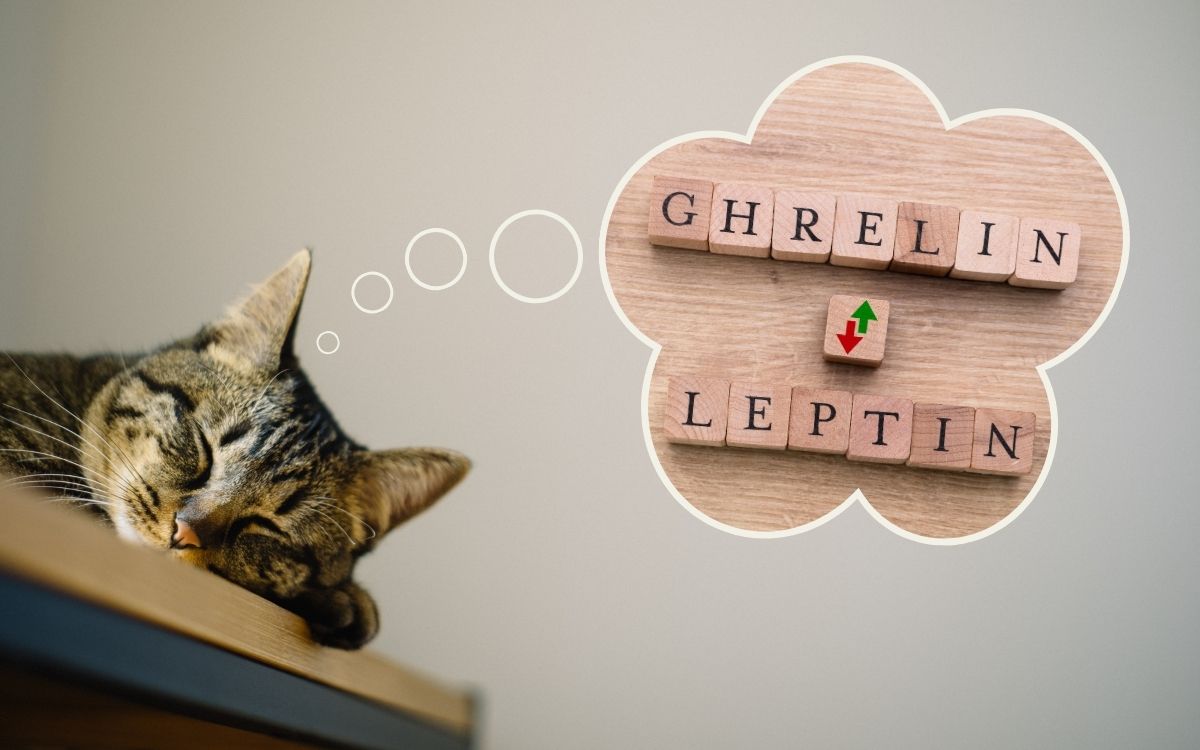Scroll down to listen to this article.
Low back pain affects some 60-90% of people at some point in their lives. Most cases resolve within a few months, but sometimes, a more sinister condition lies underneath. When the cause of pain is nerve root irritation, the condition is called lumbosacral radiculopathy. Lumbosacral describes where this pain occurs: in the lumbar (lumbo- lower back) and –sacral (back of the hip) area. This is part of the spinal cord and contains the nerves that control and sense pain in the hips and legs. Radiculopathy describes the problem. Radiculo- comes from the Greek radix, indicating the root of the nerve. Pathy is from the Greek patheia and means suffering or pain. Together, it is clear what lumbosacral radiculopathy is: lower back pain originating from a nerve root. Though low back pain is common, lumbosacral radiculopathy affects only around 3-5% of the population. It is more common in males, but occupation plays a bigger role than sex.

Lumbosacral radiculopathy is defined through the presentation of pain and where it is located. This presentation is usually back pain but may radiate into the legs. People describe the pain as electric, burning, and/or sharp. Untreated, it can affect sleep, mood, and your ability to function. In general, the nerve root is aggravated through either compression or inflammation, but the underlying causes are diverse. Degenerative spine conditions, including disc herniation, spondylolisthesis, and spinal stenosis, cause lumbosacral radiculopathy when nerves are physically crushed or pinched by parts of the spinal column. Injury and tumors can also cause parts of the nerve to be pinched. Alternatively, the nerve root can become inflamed from infection, vascular conditions, and injury.
Before we move into treatments, it is important to understand how nerves work. A nerve is a cell or group of cells called neurons that communicate information through electricity. Individual cells gather information from one end and fire an “action potential.” This is an electrical and physical event. Cells open special holes called ion channels that let charged particles (usually sodium and calcium) into the cell. Some ion channels are activated by mechanical stress, proteins, and chemical neurotransmitters, but many are activated by electricity! When enough charged ions cross the channels, other electricity-dependent ion channels start rapidly opening, letting in a rush of charged particles and causing the whole cell to “fire.” At the distant end of the neuron, chemical neurotransmitters are released, and the signal can move to other cells.
An illustration of a neuron opening ion channels and firing an action potential
Treatments for lumbosacral radiculopathy vary widely but can be grouped into conservative (non-surgical) and surgical. Initial conservative treatments include exercises, education, and NSAID anti-inflammatory medications like ibuprofen. More intensive therapies may consist of antidepressants and anticonvulsants, which modify how the neurons communicate. Other than injected steroids, these are all systemic treatments, meaning they affect the whole body and can come with a host of side effects. Surgical therapy options are invasive and can come with risks as well as pain. The “gold standard” surgery is a laminectomy with discectomy, where parts of the vertebrae and disc are removed. This has been shown to be safe, but improvements to symptoms and function – especially in the long term – are dubious. The goal in most lumbosacral radiculopathy cases is to stay with conservative treatments as long as possible.
Luckily, scientists are always on the prowl for new treatments. Remember the ion channels? It turns out not all ion channels are created equal. One type of ion channel, NaV 1.8, transports the common ion sodium. This channel is only found in peripheral pain neurons – like those that may be aggravated in lumbosacral radiculopathy. This ion channel has been shown to be necessary for pain neurons to fire their action potential. Medications that can shut down this ion channel may be able to relieve the symptoms of lumbosacral radiculopathy, hopefully without wide-ranging side effects. Ridiculous as it sounds, relief for lumbosacral radiculopathy may be near.
Staff Writer / Editor Benton Lowey-Ball, BS, BFA
Listen to the article here:
References:
Alexander, C. E., & Varacallo, M. (2017). Lumbosacral radiculopathy. https://europepmc.org/article/nbk/nbk430837
Berry, J. A., Elia, C., Saini, H. S., & Miulli, D. E. (2019). A review of lumbar radiculopathy, diagnosis, and treatment. Cureus, 11(10). https://www.ncbi.nlm.nih.gov/pmc/articles/PMC6858271/
Clark, R., Weber, R. P., & Kahwati, L. (2020). Surgical management of lumbar radiculopathy: a systematic review. Journal of general internal medicine, 35, 855-864. https://www.ncbi.nlm.nih.gov/pmc/articles/PMC7080952/
Hsu, P. S., Armon, C., & Levin, K. (2017). Acute lumbosacral radiculopathy: Pathophysiology, clinical features, and diagnosis. Waltham, MA: UpToDate Inc. https://www.ncbi.nlm.nih.gov/books/NBK430837/
Kuijer, P. P. F., Verbeek, J. H., Seidler, A., Ellegast, R., Hulshof, C. T., Frings-Dresen, M. H., & Van der Molen, H. F. (2018). Work-relatedness of lumbosacral radiculopathy syndrome: review and dose-response meta-analysis. Neurology, 91(12), 558-564. https://doi.org/10.1212/01.wnl.0000544322.26939.09
Renganathan, M., Cummins, T. R., & Waxman, S. G. (2001). Contribution of Nav1. 8 sodium channels to action potential electrogenesis in DRG neurons. Journal of neurophysiology, 86(2), 629-640.https://journals.physiology.org/doi/full/10.1152/jn.2001.86.2.629




